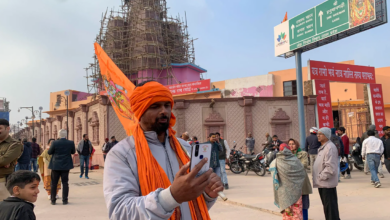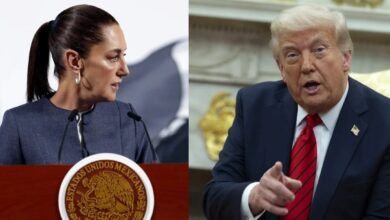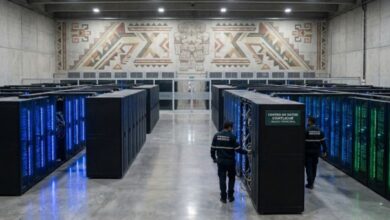Latin America Unveils WWII Memories Eighty Years After Europe’s Peace

On May 8, the world observes the 80th anniversary of Victory in Europe Day. Even as headlines highlight battles fought an ocean away, Latin America’s lesser-known contribution to World War II resurfaces, revealing stories of alliances, resources, and resilience.
A Hemisphere’s Journey to War
The official war ended in Europe on May 8, 1945, meaning global politics changed. Even with distance from intense combat areas, Latin America did participate in WWII. Each country in the region had hard decisions. Some chose hesitant neutrality – others gave complete support to the Allied forces. Mexico and Brazil entered the war. They sent soldiers and pilots to foreign battlefields. From raw materials to secure ports, certain nations provided essential resources. This reshaped their economies plus their international relations.
Argentina remained neutral until March 1945. It wanted to gain political and commercial advantages before it declared war on the Axis. Raw materials and ports that were secure came from some nations. This changed both their economies plus international relations. Meanwhile, Chile allowed Nazi espionage networks to operate early on, all the while hosting refugees fleeing European battle zones. In Uruguay, the sinking of the German battleship Graf Spee off the coast near Montevideo demonstrated how quickly the conflict arrived in South American waters. Across the continent, shipping disruptions also devastated local industries, with banana growers in Central America facing severe crises as European and Asian markets collapsed.
While Latin American leadership often had pro-U.S. sentiment, it also contended with domestic political complexities. Diplomatic pressure from Washington intensified through the Good Neighbor Policy, fostering closer economic and military ties. This synergy, however, came with expectations of cooperation, whether in the form of strategic airbases in the Galápagos Islands (Ecuador) or critical minerals from nations like Bolivia and Peru. As war raged, powerful dictators such as Getúlio Vargas in Brazil and Jorge Ubico in Guatemala found themselves navigating new political realities shaped by the ideals of democracy championed by the Allied powers.
Brazil, Mexico, and Many Others
Among the clearest examples of Latin America’s active role in WWII, Brazil stands out for sending more than 25,000 soldiers to the European theater. The Brazilian Expeditionary Force is a name for troops. These soldiers fought with bravery in Italy. They helped the Allied progress at Monte Castelo. The total number of Allied soldiers was greater, but the Brazilians’ deeds were necessary. The number of Brazilians who did not come home totaled 467. Similarly, Brazil had airbases in the northeast part of the country. The Allied planes used the bases to get more fuel. This happened as the aircraft went to North Africa and Europe.
Mexico’s role in WWII included both home-front contributions and combat missions abroad. After German U-boats sank two Mexican oil tankers in 1942, President Manuel Ávila Camacho declared war on the Axis. Mexico increased its output of minerals important to war, such as copper, zinc, and lead. This output helped Allied factories to acquire the resources they needed. Factories used minerals to construct tanks and aircraft next to weapons. At the same time, the well-known 201st Fighter Squadron, also called the Aztec Eagles, completed many missions in the Philippines. This symbolized the nation’s active involvement in a foreign war. Mexico also signed the Bracero Program with the United States, sending thousands of farm workers north to address labor shortages, which permanently shaped bilateral relations.
Elsewhere, Uruguay shipped meat and resources to Allied armies, while Paraguay, under pressure, broke ties with the Axis and declared war in 1945. Chile’s path involved espionage crackdowns alongside humanitarian efforts, as more than 600 Chileans volunteered in Allied forces, and the country eventually joined the Allies in April 1945. Colombia faced the sinking of its merchant ships and responded by detaining Axis nationals, though it did not send official troops overseas. In the Caribbean, Cuba became notable for sinking a German submarine, the U-176, reinforcing a robust Allied naval presence in regional waters.
Panama did not participate directly in World War II. Still, it constituted a strategic position for Allied logistics due to U.S. control of the interoceanic canal, key to the movement of troops, supplies, and vessels between the Atlantic and Pacific Oceans. El Salvador, Honduras, Nicaragua, and the Dominican Republic declared war on the Axis early, seizing businesses owned by German, Italian, and Japanese nationals. Bolivia and Venezuela saw tin and oil production grow because of the war, and their economies changed permanently. In addition, cultural plus social areas felt the war’s impact. A newspaper, El Mundo Libre, in El Salvador supported democracy. A different newspaper, La Voz de Chihuahua, in Mexico, promoted solidarity across the continent. Government agencies like the Office of Inter-American Affairs in the U.S. utilized radio broadcasts and film to rally Latin American support, forging new bonds even as the region struggled with shipping disruptions and political unrest.
Lasting Changes and a Commemorative Legacy
The anniversary of V-E Day, the 80th, is today. It is a suitable time to focus on Latin America’s various involvements in World War II. In terms of the economy, the war caused change. Production from Mexican industries increased significantly. This created the “Mexican Miracle” period of continual growth. Chilean copper mining, Venezuelan oil drilling, and Bolivian tin exports saw similar gains. Militarily, countries from Argentina to Honduras modernized their forces, forging stronger ties with the United States. The war’s ideological impact also helped topple dictators, including Maximiliano Hernández Martínez in El Salvador and Jorge Ubico in Guatemala.
The conflict created new migration routes. Thousands of refugees found homes in Mexico, Argentina, and other nations. Meanwhile, the Bracero initiative reorganized how labor moved. It started future immigration and cultural exchange. The sense of inter-American unity, bolstered by the Good Neighbor Policy, lingered even after peace treaties were signed.
From a vantage point eighty years later, Latin American nations’ roles in World War II show that global conflicts rarely stay inside main combat zones. Each nation managed changing loyalties, the need for materials, and diplomatic stress in a particular way. All nations contributed to the Allied win. From Brazilian soldiers braving winter in the Apennines to Mexican pilots crossing the Pacific skies, the region’s sacrifices and contributions echo through history.
As memorials and commemorations unfold this May 8, acknowledging Latin America in WWII reminds us that the fight against the Axis extended well beyond the beaches of Normandy or the ruins of Berlin. Uruguayan farmland, Chilean copper mines, banana shipments from Central America, and airfields in Ecuador also played a part. Layers of history show the past of a continent. They also show how global powers have an ongoing effect on the path of Latin America.
Also Read: Mengele’s Unwanted Bones: A Haunting Relic Boxed Away in Brazil’s Medical Vault
At the 80th anniversary of Victory in Europe Day, people remember brave soldiers who served. They also recall many others who bore the load of war far away. Their ability to recover created modern Latin America. It formed routes of growth and unity, as well as lasting connections. This is a legacy for later generations to celebrate, study, and remember.





